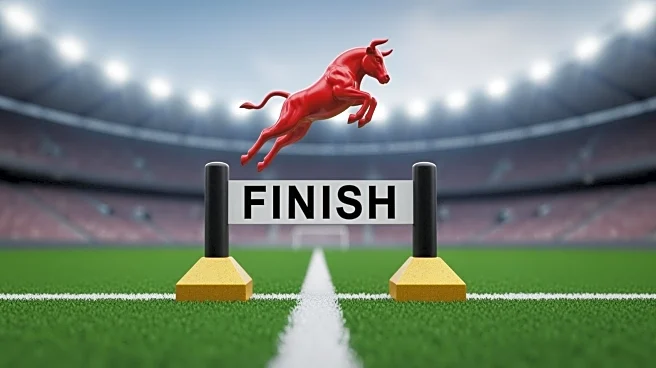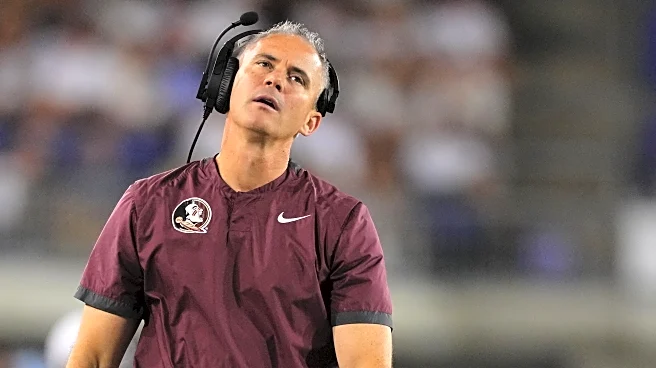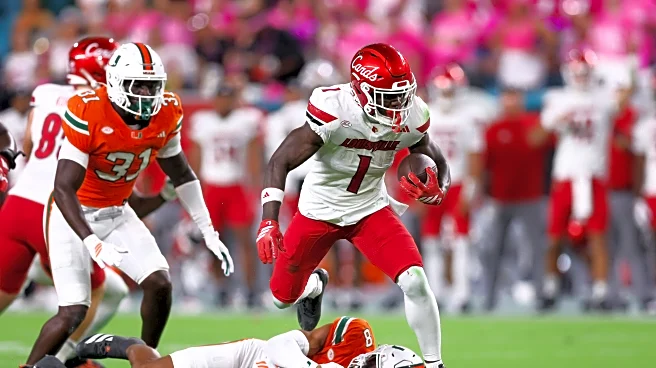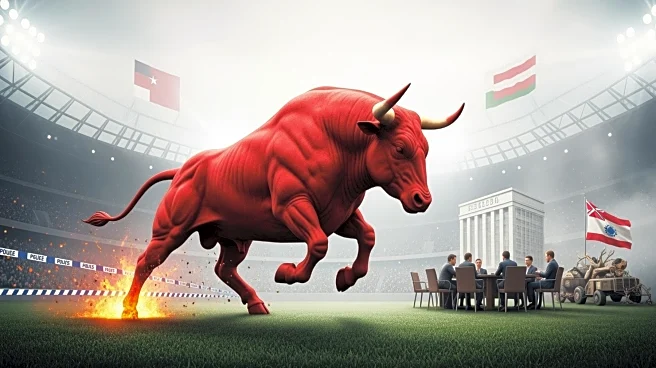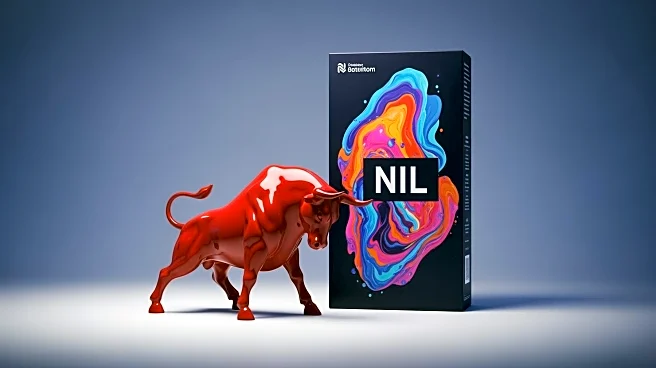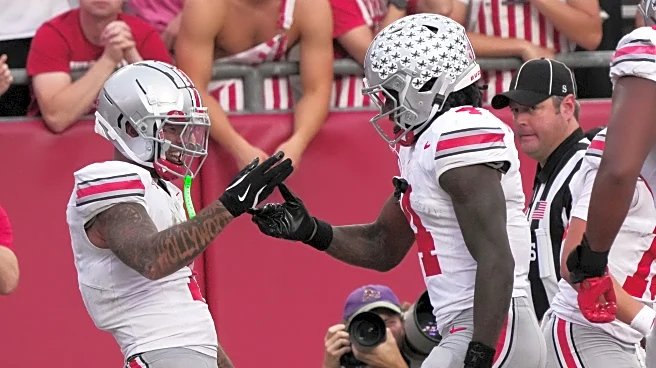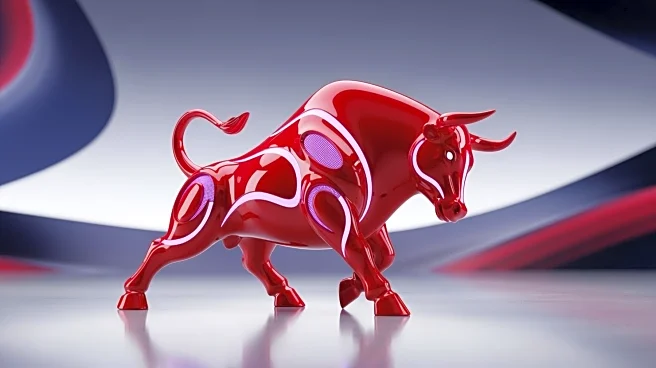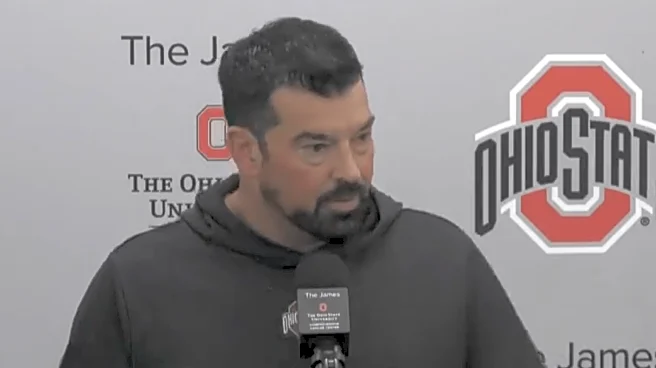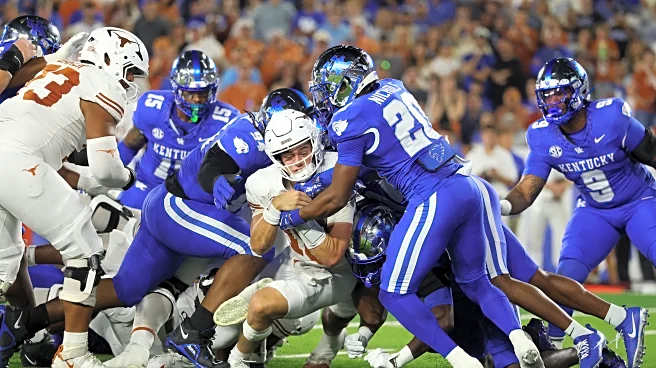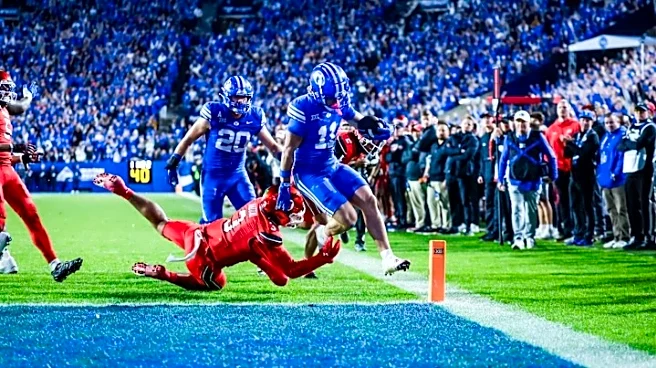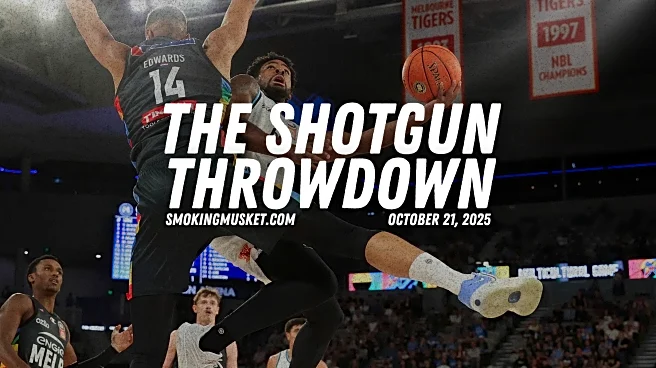What's Happening?
Ohio State wide receiver Jeremiah Smith has made history by becoming the first college athlete to be featured on a Red Bull can. This development is part of a Name, Image, and Likeness (NIL) deal he signed with the energy drink company last year. The
limited-edition can, which showcases Smith making a one-handed catch, will be available exclusively in Ohio through December or until supplies last. Smith's On3 NIL valuation stands at $4.2 million, placing him third on the On3 NIL 100 list, which ranks college athletes based on their marketability. Smith's partnership with Red Bull is part of a broader trend of college athletes securing lucrative sponsorships following changes in NCAA rules that allow them to profit from their NIL. Smith, a former five-star recruit from Florida, has been a standout player for Ohio State, recording 49 receptions for 602 yards and seven touchdowns in the current season.
Why It's Important?
This partnership highlights the growing influence and financial opportunities available to college athletes under the NIL framework. Smith's deal with Red Bull not only elevates his personal brand but also underscores the increasing commercial interest in college sports. The NIL deals are reshaping the landscape of college athletics, providing athletes with new revenue streams and the ability to capitalize on their popularity. This shift has significant implications for the recruitment and retention of top talent in college sports, as athletes now have the potential to earn substantial income while still in school. The success of athletes like Smith in securing high-profile endorsements could encourage more companies to invest in college sports, further blurring the lines between amateur and professional athletics.
What's Next?
As NIL deals become more prevalent, it is likely that more college athletes will seek similar opportunities to enhance their marketability and financial standing. This trend may lead to increased competition among brands to secure partnerships with top athletes, potentially driving up the value of NIL deals. Additionally, universities may need to adapt their recruitment strategies to emphasize the potential for athletes to benefit from NIL opportunities. The NCAA and other governing bodies will continue to monitor the impact of NIL deals on college sports, potentially leading to further regulatory changes to ensure fair competition and compliance.
